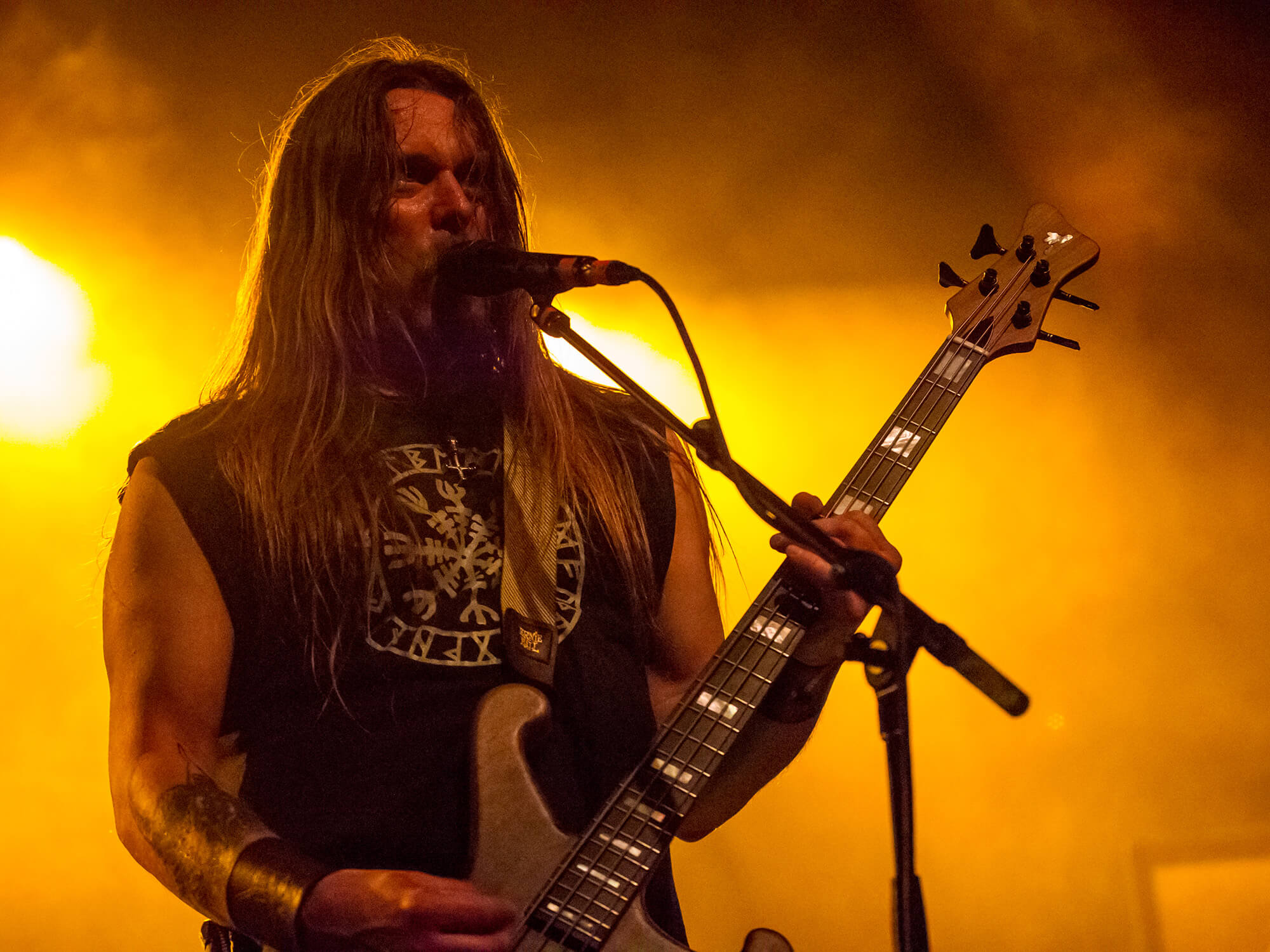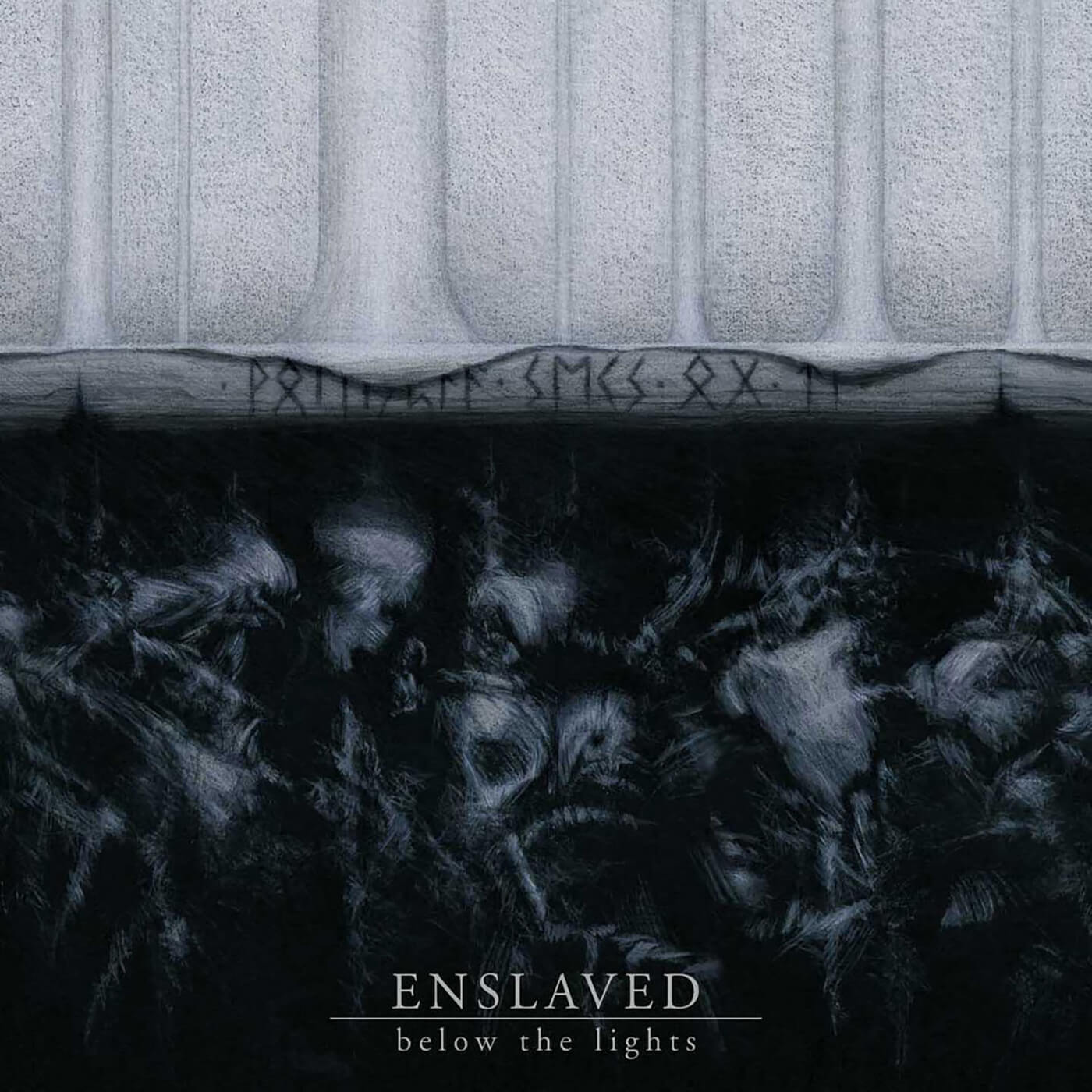Related Tags
The Genius Of… Below the Lights by Enslaved
Despite struggling with lineup changes and an apathetic label, the progressive black metal vikings perfected their clash of ambitious songwriting and snarling aggression.

Grutle Kjellson of Enslaved. Image: Miikka Skaffari/Getty Images
Enslaved were black metal’s original outcasts. Although the Haugesund vikings began as proteges of “true Norwegian black metal” mastermind Øystein “Euronymous” Aarseth, they never enjoyed a seat in the scene’s inner circle, since they refused to make satanic music. They reject the genre descriptor to this day as a result, even three decades later.
The irony of that is that this band are what Euronymous always wanted black metal to be. The Mayhem guitarist centred his movement around his record shop, Helvete, where he spent as much time exposing people to prog and synth music as he did Venom and Bathory. He envisioned a soundscape that kept transgressing the boundaries of heavy music, and few have challenged metal convention as consistently as Enslaved.
The duo formed in 1991 and, by the time Euronymous was murdered two years later, guitarist/songwriter Ivar Bjørnson and singer/bassist Grutle Kjellson were amalgamating everything they’d heard in Helvete into their music. 1994 debut album Vikingligr Veldi snarled about Norse mythology, with its ’70s-style krautrock touches sealing the shamanic aura. The weirdness of the band’s output waxed and waned for almost a decade – then they nailed the balance with their magnum opus, Below the Lights.
Nobody expected Enslaved’s seventh album, now 20 years old, to be the band’s defining moment. They were still on the underground Osmose label, who picked them up following the dissolution of Euronymous’s Deathlike Silence Productions in 1994. Plus, their prior albums, 2000’s Mardraum and 2001’s Monumension, were so out-there that many metalheads found them impenetrable. Osmose founder Hervé Herbaut claims distributors sent 5,000 copies of Monumension back because nobody wanted them, although Bjørnson’s said the label were doing nothing to promote Enslaved at that point anyway.
“Osmose always fulfilled their obligations and everything,” the guitarist told webzine Teeth of the Divine in 2005, “but we haven’t actually worked with a label that believed 100 percent in what Enslaved were doing. To be honest, I think Osmose were hoping for us to move away from the experimental stuff and become a straightforward viking metal band.”

Worsening the situation was Enslaved’s internal strife. They added second guitarist Roy Kronheim to their ranks in 1997 only to dismiss him five years later, allegedly due to his insistence on adding stoner rock overtones to Monumension, which Bjørnson and Kjellson weren’t fussed on. Drummer Per “Dirge Rep” Husebø apparently didn’t share the duo’s vision either: he left right after Below the Lights was recorded in 2002, then quickly joined by-the-book black metal also-rans Orcustus.
With Husebø half-gone and only contributing a handful of lyrics (and then-session guitarist Arve Isdal replacing Kronheim), Bjørnson regained total control of Enslaved’s songwriting for Below the Lights. This was inarguably to the album’s benefit: the composer maintained the more adventurous scope of Mardraum and Monumension, but made the songs simpler by not fighting for space with other people’s ideas. Opener As Fire Swept Clean the Earth instantly illustrates this, layering polyrhythmic drum patterns beneath some accessible, looping black metal chords.
Even The Crossing, despite all of its post-rock escalation and that nine-minute run-time, feels easier to understand than what was in Enslaved’s immediate past. The smooth acoustic passages add so much space to breathe, and often continue underneath the song’s blasts of explosive yet atmospheric metal. Then Queen of Night kickstarts as a flutey folk piece before launching into a marching hard rock drum beat and a callous-shredding guitar solo. It’s like it’s apologising to metalheads for its own whimsical opening.
The standout song for so many, however, is Havenless. The half-viking-chorus-half-black-metal-rager has become a fixture of the Enslaved setlist, bolstered by its burly-as-fuck opening of baritone Old Norse war chants. With its stomping kick drum and isolated guitar chords, it’s the purest, simplest form of “viking metal” you’ll ever find.
When released on April 14, 2003, Below the Lights wasn’t an overnight smash, but it signposted great things to come. Despite not charting, it was hailed as Enslaved’s best album by contemporary critics. It also marked the end of the band’s Osmose deal at the perfect time: off the back of the underground buzz, they signed with former Emperor and Opeth label Candlelight in 2004. That year’s Isa album was as beloved as its predecessor, then follow-up Ruun saw the band chart for the first time in their native Norway.
Even today, 16 albums in, Enslaved perform the same balancing act of avant-garde songwriting and primal black metal nastiness that Below the Lights refined. Now with added synthpop and space rock segments, they self-categorise as all the best bands in your record collection rolled into one. And, were it not for their masterwork’s perfection of their metal core and progressive flourishes, who knows if they’d have ever made it this far?
Enslaved’s new album, Heimdal, is out now via Nuclear Blast. The band will co-headline Incineration Festival, London, on May 13 and perform Below the Lights in full at A Night of Salvation, Manchester, on November 3.
